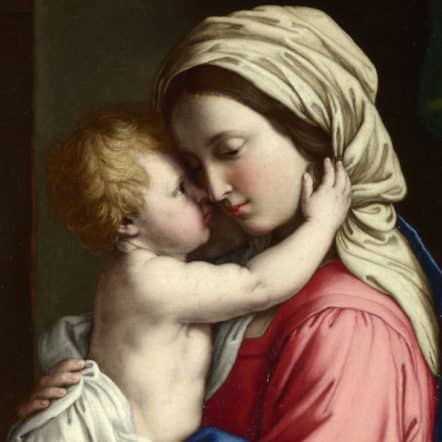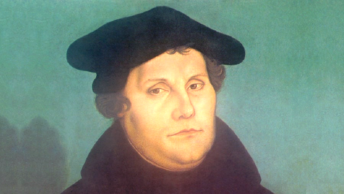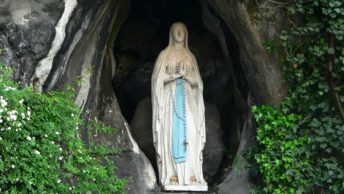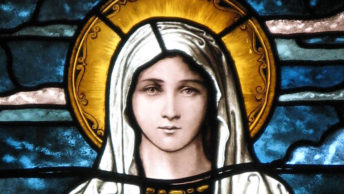Mary has always been the subject of Pope Francis’ thought throughout his pontificate. Together with the vast theological richness of previous pontificates, Pope Francis’ view about Mary is extremely interesting, touching and down to earth too. Thanks to the pontificate of Pope Bergoglio the Virgin Mary is presented in a way that is closer to us, as her sons and daughters.
What strikes the eye in the mariology of Pope Francis is the fact that Mary is the result not only of his theologia mentis, which is the methodological and rigorous dogmatic approach. When one delves deeper into the Holy Father’s reflections on Mary, the Mother of God and Our Heavenly Mother, one immediately senses his theologia cordis, with its predominant thrust towads emotions. Words like being moved, love or zeal become leading theological tools at the crafted hands of Pope Francis. Furthermore, such words add more, adorn and explicate Pope Francis’ authentic teaching fuelled by his filial dedication to Mary as his Mother together with her maternal prayers.
In Pope Francis’ mariology we have an interesting nexus or connection, between Christ and the Church. Mary is the most concrete expression of this relationship. Hence, Francis proposes a mariology that, while following the path of truth (via veritatis) it also has the capacity to connect truth with the way of beauty (via pulchritudinis). In his Angelus on 8 December 2017, Pope Fancis said: Before calling her ‘Mary’, he [the Angel] calls her full of grace, and thus reveals the new name that God has given her and which is more becoming to her than the name given to her by her parents. We too call her in this way, with each Hail Mary. For Pope Francis Mary’s collaborative role with the salvific mission wrought by Her Son and our Saviour Jesus Christ is made visible through her faithful following of the path of love (via caritatis) as wonderfully expressed by her loving tenderness.
Pope Francis’ mariology is deeply biblical. When one reads attentively his speeches one easily encounters innumerable biblical references which refine his descriptive and down to earth approach which his Mariological legacy is imbued with. Thanks to his unitive and inclusive style of theology, Pope Bergoglio manages to unite both Testaments. For him both testaments amply show that in Mary they beautifully converge. Seen from this perspective, Mary is truly a daughter of Israel, the conclusion of the Messianic Church of Israel and the commencement of the growing Church of Christ. In his General Audience of 23 October 2013, the Holy Father said:
Let us begin with the first aspect, Mary as the model of faith. In what sense does Mary represent a model for the Church’s faith? Let us think about who the Virgin Mary was: a Jewish girl who was waiting with all her heart for the redemption of her people. But in the heart of the young daughter of Israel there was a secret that even she herself did not yet know: in God’s loving plan she was destined to become the Mother of the Redeemer. At the Annunciation, the Messenger of God calls her “full of grace” and reveals this plan to her. Mary answers ‘yes’and from that moment Mary’s faith receives new light: it is concentrated on Jesus, the Son of God, who from her took flesh and in whom all the promises of salvation history are fulfilled. Mary’s faith is the fulfilment of Israel’s faith, the whole journey, the whole path of that people awaiting redemption is contained in her, and it is in this sense that she is the model of the Church’s faith, which has Christ, the incarnation of God’s infinite love, as its centre (no.1).
In his mariological reflection, Pope Francis presents Mary as the prophetic antithesis of Eve. In his address at the Prayer of the Marian Day on the Occasion of the Year of Faith, on Saturday 12 October 2013, he stated: The first aspect of her faith is this: Mary’s faith unties the knot of sin (cf. Lumen Gentium, 56). What does that mean? The Fathers of the Second Vatican Council took up a phrase of Saint Irenaeus, who states that ‘the knot of Eve’s disobedience was untied by the obedience of Mary; what the virgin Eve bound by her unbelief, the Virgin Mary loosened by her faith” (Adversus Haereses, III, 22, 4) (no.1). In his doctrine concerning the relationship of the Old Testament to the New Testament regarding Mary, Pope Francis portrays her as “the humble and poor daughter of Zion”. When speaking at the Angelus of 20 December 2015, Pope Francis said: It is only with the heart of Mary, the humble and poor daughter of Zion, who became the Mother of the Son of the Most High, that it is possible to rejoice and be glad for the great gift of God and for his unpredictable surprise. Let us not forget that when explaining the figure of Mary Pope Francis also mints his teaching with the rich flavour of the Fathers of the Church, medieval writers, and periodically the liturgy and pre-conciliar teachings of the Magisterium of the Church.
Pope Francis insists on Mary’s divine Motherhood in the light of the outstanding legacy of the Second Vatican Council. Here Mary’s role is evolved in a historical-salvific approach. Mary is put on the high stage of the economy of salvation but only inasmuch as she points to Christ who alone is the significance and centre of history. In the Angelus address of 15 August 2018, Pope Francis taught us: Her Assumption into heaven, in body and soul, is a divine privilege accorded to the Holy Mother of God for her particular union with Jesus.
Pope Francis also presents Mary as the perfect creation of the Holy Trinity. Fully endowed by God’s grace, Mary was able to humble herself and give her total assent in faith to God’s plan for her. Marvelled at her YES of faith Pope Francis, in the Angelus address of 15 August 2015, said: Faith is the heart of Mary’s whole story: she is the believer, the great believer; she knows — and she says so — that historically the violence of the powerful, the pride of the rich, the arrogance of the proud are burdensome. However, Mary believes and proclaims that God does not leave his humble and poor children alone, but helps them with mercy, with care, overthrowing the mighty from their thrones, scattering the proud in the machinations of their hearts. This is the faith of our Mother, this is the faith of Mary!
Mary’s most wonderful and breathtaking coperation with the Holy Trinity can be magnificently traced back in her singular collaborative contribution in Christ’s salvific work. Pope Francis acknowledges this while backing the mariological reflection of Lumen Gentium and connecting it with the mariology of his predecessors Pope St Paul VI, Pope St John Paul II and Pope Benedict XVI. In all this intriguing process Pope Francis adds his own contribution by developing Marian themes such as the faith of Mary, the nature of Mary’s presence and manifestations within the Church’s ministry of love, the reference to the Word of God, the beauty of the Immaculate, entrusting oneself to Mary, the Mother of mercy, the Mother of our hope, the remembering Woman and the Teacher of piety. More than simply addressing these themes theologically Pope Francis wisely draws the pastoral implications in line with his Peterine ministry approach which is spiritual rather than dashing out sheer theological reflection aloof from everyday living. Is this not in line with what Pope Francis said in his interview with Father Antonio Spadaro when he affirmed: If we want to know who Mary is, we have to ask theologians. But if we want to know how to love her, we have to ask the people?
Hence, Pope Francis’ Marian reflection is deeply pastoral. His simple style of speaking, directness and also the Spirit-given capacity to meet people’s hearts are really amazing features which highlight this fact. In one of his first homilies at the House of Saint Martha Pope Francis wisely said: that the faith of the people of God is consists of a simple faith which does not contain alot of theology but includes a theology that is free from errorsimply because it has the Holy Spirit at its heart.
In his mariological reflections, Pope Francis presents Mary as an example from whom we can draw the courage we need in our lives. What a great grace for us is her maternal loving protection and also her reminding us of the Spirit who lives in us and guides us. In his Homily for the feast of Our Lady of Fátima Square in front of the Shrine of Our Lady of Fátima, on 13 May 2017, Pope Francis told us that Mary came to remind us that God’s light dwells within us and protects us.
He repeats the same message in his apostolic exhortation Evangelii Gaudium: Mary was able to turn a stable into a home for Jesus, with poor swaddling clothes and an abundance of love. She is the handmaid of the Father who sings his praises. She is the friend who is ever concerned that wine not be lacking in our lives. She is the woman whose heart was pierced by a sword and who understands all our pain. As mother of all, she is a sign of hope for peoples suffering the birth pangs of justice. She is the missionary who draws near to us and accompanies us throughout life, opening our hearts to faith by her maternal love. As a true mother, she walks at our side, she shares our struggles and she constantly surrounds us with God’s love. Through her many titles, often linked to her shrines, Mary shares the history of each people which has received the Gospel and she becomes a part of their historic identity. Many Christian parents ask that their children be baptized in a Marian shrine, as a sign of their faith in her motherhood which brings forth new children for God. There, in these many shrines, we can see how Mary brings together her children who with great effort come as pilgrims to see her and to be seen by her. Here they find strength from God to bear the weariness and the suffering in their lives. As she did with Juan Diego, Mary offers them maternal comfort and love, and whispers in their ear: ‘Let your heart not be troubled… Am I not here, who am your Mother? (no.286).
Pope Francis teaches us that Mary is the icon of joy. The Holy Father explains this to us in his Angelus address of 15 December 2013: It consists in knowing one is welcomed and loved by God. […] Christian joy […] is founded on God’s fidelity, on the certainty that he always keeps his promises […]. Our joy is Jesus Christ, his faithful love is inexhaustible! In his Message for the 52nd World Day of Prayer For Vocations of 29 March 2015, Pope Francis tells us that Mary, the woman of faith, evangelizes because she is full of joy! Mary, who sang “My spirit rejoices” is joyful because she sang of the joy of leaving herself behind and entrusting to God the plans she had for her life. Her shining example encourages you and me, as Christians, to be joyful by obeying what St Paul wisely exhorts us to do: Rejoice with those who rejoice, weep with those who weep (Rom 12:15).
Pope Francis sees Mary as the perfect miror of how the Church should be. Thanks to Mary, the Church rediscovers her true sensitive and caring face. Additionally, the more we contemplate the Church the more we notice the noble qualities Mary has. The Holy Father teaches us so in his General Audience of 3 September 2014: We understand, then, how the relationship which unites Mary and the Church is so deep: by looking at Mary, we discover the most beautiful and most tender face of the Church; and by looking at the Church, we recognize the sublime features of Mary. We Christians are not orphans, we have a mama, we have a mother, and this is great! We are not orphans! The Church is mother, Mary is mother (no.1).
An important aspect in Pope Francis’s mariology, which is so close to his heart, is the title he adopts from the Church’s tradition and ascribes it to Mary as “the Mother of Mercy”. For Pope Francis, as he wrote in Misericordiae Vultus, the Bull announcing the Extraordinary Jubilee of Mercy of 11 April 2015: the sweetness of [Mary’s] countenance” helps us “rediscover the joy of God’s tenderness” (no. 24). This is because, as Misericordiae Vultus says, her entire life was patterned after the presence of mercy made flesh. The Mother of the Crucified and Risen One has entered the sanctuary of divine mercy because she participated intimately in the mystery of His love” (no.24). Within the same number of the Bull the Pope says that Mary treasured divine mercy in her heart in perfect harmony with her Son Jesus. Her hymn of praise, sung at the threshold of the home of Elizabeth, was dedicated to the mercy of God which extends from “generation to generation” (Lk 1:50) (no.24).At the foot of the Cross, from which Jesus forgives those who crucified him, Mary emerges as a powerful witness of this saving forgiveness. She, as Misercordiae Vultus states, attests that the mercy of the Son of God knows no bounds and extends to everyone, without exception (no.24). No wonder than that the Christian tradition, thanks to the Salve Regina, calls her Mother of Mercy. Finally, as the Bull says, Mary never tire[s] of turning her merciful eyes upon us, and make us worthy to contemplate the face of mercy, her Son Jesus (no.24).
When one considers that throughout her canticle God’s mercy is the decisive reason which orients the personal history of each and every one of us, that the mystery of her immaculate conception was one of sheer grace and her outstanding life witness of receiving and sharing that grace with others, we are simply led to be convinced that Mary, as the Mother of Mercy, is the primary and most powerful intercessor for the Church’s new evangelization. After all, it is precisely, as Pope Francis said in his Address to the participants of the plenary assembly of the Pontifical Council for Promoting New Evangelization, on 29 May 2015, the gift of mercy which is the message that the Church is called to pass on in her work of evangelization in this time of great changes. Within the same speech, the Holy Father reminded us that the Virgin Mother of Mercy[‘s] support and her intercession is crucial in this most demanding task.
Drawing from the vast richness of the Gospels, Pope Francis tells us that the figure of Mary brings hope. If one were to see deeply her life one could easily notice that her attitudes were profoundly infused with hope. The Holy Father emphatically asserts that Mary always trusted in God’s mystery, especially when He gave the impression of being aloof due to the world’s choice for evil. He encourages us with these words during his General Audience of 10 May, 2017: We will find her again on the first day of the Church; she, mother of hope, in the midst of that community of such fragile disciples: one had denied, many had fled, all had been afraid (cf. Acts 1:14). She simply stood by, in the most natural of ways, as if it were something completely normal: in the first Church enveloped in the light of the Resurrection, but also in the trepidation of the first steps that had to be taken in the world. For this reason we all love her as Mother. We are not orphans: we have a Mother in heaven who is the Holy Mother of God. Because she teaches us the virtue of waiting, even when everything seems to lack meaning: she is ever confident in the mystery of God, even when he seems to have eclipsed himself due to the evil of the world.
That incredible, strong and healing waiting of Mary, where everything seemed futile and devoid of any meaning, reminds us Christians that we too need to hope. Mary’s life was a Magnificat fuelled with and was geared towards hope. Thus, Pope Francis teaches us during his Homily for the Solemnity of the Assumption of the Blessed Virgin Mary, on 15 August 2013: “Hope is the virtue of those who, experiencing conflict – the struggle between life and death, good and evil – believe in the resurrection of Christ, in the victory of love. We heard the Song of Mary, the Magnificat: it is the song of hope, it is the song of the People of God walking through history. It is the song many saints, men and women, some famous, and very many others unknown to us but known to God: mums, dads, catechists, missionaries, priests, sisters, young people, even children and grandparents: these have faced the struggle of life while carrying in their heart the hope of the little and the humble. Mary says: ‘My souls glorifies the Lord’ – today, the Church too sings this in every part of the world. This song is particularly strong in places where the Body of Christ is suffering the Passion. For us Christians, wherever the Cross is, there is hope, always. If there is no hope, we are not Christian. That is why I like to say: do not allow yourselves to be robbed of hope. May we not be robbed of hope, because this strength is a grace, a gift from God which carries us forward with our eyes fixed on heaven. And Mary is always there, near those communities, our brothers and sisters, she accompanies them, suffers with them, and sings the Magnificat of hope with them. May we too, as Christians, our life becomes a Magnificat of hope since we put our hope in God and in the transformative power of his unfathomable mercy.
The figure of Mary, Mother of hope, in the face of terrible situations like darkness, difficulty, discouragement and human disasters leads us forward on the path of our pilgrimage of faith. Her very presence, as Pope Francis said in his General Audience of 10 May 2017, always say[s] to our hearts: ‘Arise! Look forward, look to the horizon’, [simply] because she is the Mother of Hope.
The final Mariological motif which is so present within the ordinary magisterium of Pope Francis regarding Mary is, as he told us during his Video Message to the Polish Pilgrims Gathered to Celebrate the 300th Anniversary of the Coronation of the Image of Our Lady of Czestochowa, Queen of Poland, that she is the Mother [and] Queen of tenderness. Again, in Evangelii gaudium, Pope Francis squarely admits that whenever we look to Mary, we come to believe once again in the revolutionary nature of love and tenderness (no. 288). As a people we have a caring mother. We are never orphans since, as he told us in Homily for the feast of Our Lady of Guadalupe, on 12 December 2016: Where there is a mother, there is always the presence and flavour of home. Mary, both in herself and in the countless sanctuaries dedicated to her throughout the world, offers us her great maternal love. In these sanctuaries, which are her home, pilgrims feel so much at home that they entrust to her their joys and sorrows, hopes and needs. They know that, in so doing, Mary leads them to her Son Jesus. Through Mary, these sons and daughters of her, feel so much Jesus’ love that His tender mercy certainly showers them. In his Address in the Shrine of Our Lady of the Rosary, Madhu, on 14 January 2015, Pope Francis tells us: Here, in her home, they feel safe. They know that God is very near; they feel his love; they know his tender mercy, the tender mercy of God.
Mary’s tenderness is so revolutionary that it inspires us, her sons and daughters. In his Homily at the Mass in front of the Shrine of Our Lady of Bonaria, Cagliari, on 22 September 2013, he told us that under her constant and maternal gaze we [too] need her tender gaze, her maternal gaze, which knows us better than anyone else, her gaze full of compassion and care (no.3). It is precisely her transforming maternal gaze which shall make us realize that we are not alone… we are so many, we are a people, … [Hence] Mary teaches us to have that gaze which strives to welcome, to accompany and to protect. Let us learn to look at one another beneath Mary’s maternal gaze!” (no.3). Contrary to the worldly, arrogant, divisive and violent revolutions the Christian revolution is materialized through tenderness, closeness, compassion and humble service of others. Appropriate was Pope Francis’ appeal which came from the depths of his heart during his Homily with the New Cardinals, on 15 February 2015: May she – our Mother – teach us to be unafraid of tenderly welcoming the outcast; not to be afraid of tenderness. How often we fear tenderness! May Mary teach us not to be afraid of tenderness and compassion.
Inspired by Pope Francis’ mariology, let us make our own his prayer to Mary: Mary, our merciful, tender and wise Mother, teach us and pray for us to love Jesus, His Church and every person who encounters us on our way to the Heavenly Jerusalem, till the end. “Mother of the living Gospel, wellspring of happiness for God’s little ones, pray for us. Amen.








